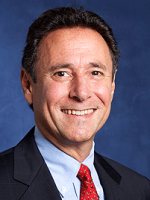-
The National Labor Relations Board (NLRB) has clarified its test for determining whether an employee’s protected activity under the National Labor Relations Act (NLRA) was a motivating factor in employee discipline. Tschiggfrie Properties, 368 NLRB No. 120 (Nov. 22, 2019). An Iowa company fired a union supporter after (among other issues) he repeatedly talked to coworkers about the union during work time, despite coworkers’ requests that he not do so. The Board found the termination was unlawful. The employer appealed to the U.S. Circuit Court of Appeals for the Eighth Circuit and the Court found the Board misapplied its Wright Line standard, by which the Board determines whether an employee’s protected activity is a “motivating factor” in the employer’s decision to take adverse action against the employee in violation of the NLRA. Wright Line, 251 NLRB 1083 (1980), enforced, 662 F.2d 899 (1st Cir. 1981), cert. denied, 455 U.S. 989 (1982). Under Wright Line, a party alleging a union or protected activity motive-based violation of the Act must prove: (1) union or other protected activity by the employee; (2) the employer had knowledge of that activity; and (3) the employer’s anti-union animus, or animus against protected activity. The Court found the Board misapplied Wright Line by improperly relying on circumstantial evidence of animus. On remand, the Board clarified that, while circumstantial evidence still may be utilized in the Wright Line analysis, “the evidence must be sufficient to establish that a causal relationship exists between the employee’s protected activity and the employer’s adverse action against the employee.” Applying the clarified Wright Line test, the Board affirmed that the employer’s termination decision violated the NLRA, in part, based on evidence that the employer previously (and unlawfully) warned the employee not to discuss the union with coworkers. The Board said this sufficiently demonstrated that the true cause of the termination was anti-union animus, not the employee’s rule violations.
-
The Trump Administration’s latest regulatory roadmap shows the NLRB expects to issue rules on joint employment and union elections by the end of the year. The NLRB has been working to finalize its proposed rule clarifying the joint employer test since September 2018. The proposed rule is designed to limit joint employer liability; under the rule, an employer would be considered a joint employer of a separate employer’s employees only if it possesses and actually exercises “substantial direct and immediate control” over the employees’ essential terms and conditions of employment, in a manner that is not “limited and routine.” The Board’s final joint employer rule will be published in the Federal Register in December 2019. The NLRB also plans to issue part of a rule to replace the Obama-era “quickie” election rule, which, among other significant changes, substantially shortened the amount of time an employer has to respond to a union election petition before an election takes place. The second part of the changes is expected to be released early in 2020. (The final rule encompassing many of the changes was announced by the Board on December 13, 2019. It will be effective 120 days from the date of publication in the Federal Register, which is anticipated to be December 18, 2019.)
-
The U.S. Court of Appeals for the Seventh Circuit has held an employee who paid “fair share” union fees under protest is not entitled to a refund of such fees, despite a U.S. Supreme Court decision finding that state laws allowing public sector unions to mandate such fees are unconstitutional. Janus v. AFSCME, No. 19‐1553, and Mooney v. Ill. Educ. Ass’n, No. 19-1774 (7th Cir. Nov. 5, 2019). In Janus v. AFSCME, 138 S. Ct. 2448 (2018), the U.S. Supreme Court held that the Constitution prohibits states and public‐sector unions from mandating payment of fair share or “agency” fees from nonconsenting employees. In light of that decision, Mark Janus, an employee who paid fair‐share fees to a union under protest (and the named litigant in the Supreme Court case), sued the union for a refund of some or all of the fees he paid prior to the Janus decision. The Seventh Circuit found that, since the Supreme Court in Janus did not specify whether it intended its decision to have retroactive effect, the union had a legal right to charge fair-share fees collected from nonmembers like Janus until the date of the Supreme Court’s decision. “Mr. Janus,” the Seventh Circuit stated, “has received all that he is entitled to: declaratory and injunctive relief, and a future free of any association with a public union.”
-
The Board has reaffirmed that unpaid interns are not “employees” as defined by the NLRA, and advocacy by employees on their behalf is not protected concerted activity under Section 7 of the NLRA. Amnesty Int’l of the USA, Inc., 368 NLRB No. 112 (Nov. 12, 2019). A group of the employer’s unpaid interns, assisted by an employee, circulated a petition requesting pay for their volunteer work. The employee who assisted the unpaid interns met privately with the employer’s Executive Director, who stated that a petition “sets off a more adversarial relationship” and is not effective when the demand could “be met without applying that pressure.” The Executive Director further stated, “[Y]ou could try talking to us before you do another petition.” The employee filed an unfair labor practice charge alleging the Executive Director’s statements violated the NLRA by (among other allegations) threatening employees. The charge was predicated on the notion that the interns involved were “employees” protected by the NLRA. The Board found the unpaid interns were not employees and therefore, were not protected by the NLRA, because they did not receive or anticipate any economic compensation from the employer. The Board found that the advocacy on behalf of interns was not NLRA-protected activity, because “advocating only for nonemployees is not for ‘other mutual aid or protection’ within the meaning of Section 7 and accordingly does not qualify for the Act’s protection.” The NLRB also held that, even if the interns were NLRA-protected, the Executive Director’s statements did not coerce them, because they did not rise to the level of conveying anger, threatening reprisal, or accusing the employees of disloyalty.
-
According to a Bloomberg Law report, negotiators for large companies used the companies’ size as leverage to keep average raises under collective bargaining agreements low in 2019. Bloomberg analyzed the weighted average of first-year wage increases in 834 collective bargaining agreements in 2019. Weighted averages, the report explains, take into account the effect of company size by counting the number of employees covered by a contract. Examining weighted averages, Bloomberg found the first-year weighted average wage increase for 2019 was 3 percent, compared with a 3.3-percent non-weighted average increase. The data, Bloomberg Law stated, included a few large employers with lower than average wage increases, suggesting those employers used their size to leverage lower wage gains in negotiations. The report found weighted average wage gains were down overall in 2019 compared to 2018, to 3 percent from 3.4 percent.
Top Five Labor Law Developments for November 2019
Monday, December 16, 2019
Current Public Notices
Published: 15 September, 2025
Published: 15 September, 2025
Published: 9 September, 2025
Published: 9 September, 2025
Published: 8 September, 2025
Published: 4 September, 2025
Published: 28 August, 2025
Published: 25 August, 2025
Published: 22 August, 2025
Published: 20 August, 2025
Published: 20 August, 2025
Published: 18 August, 2025
Published: 11 August, 2025
Published: 8 August, 2025
Published: 26 June, 2025








 />i
/>i

